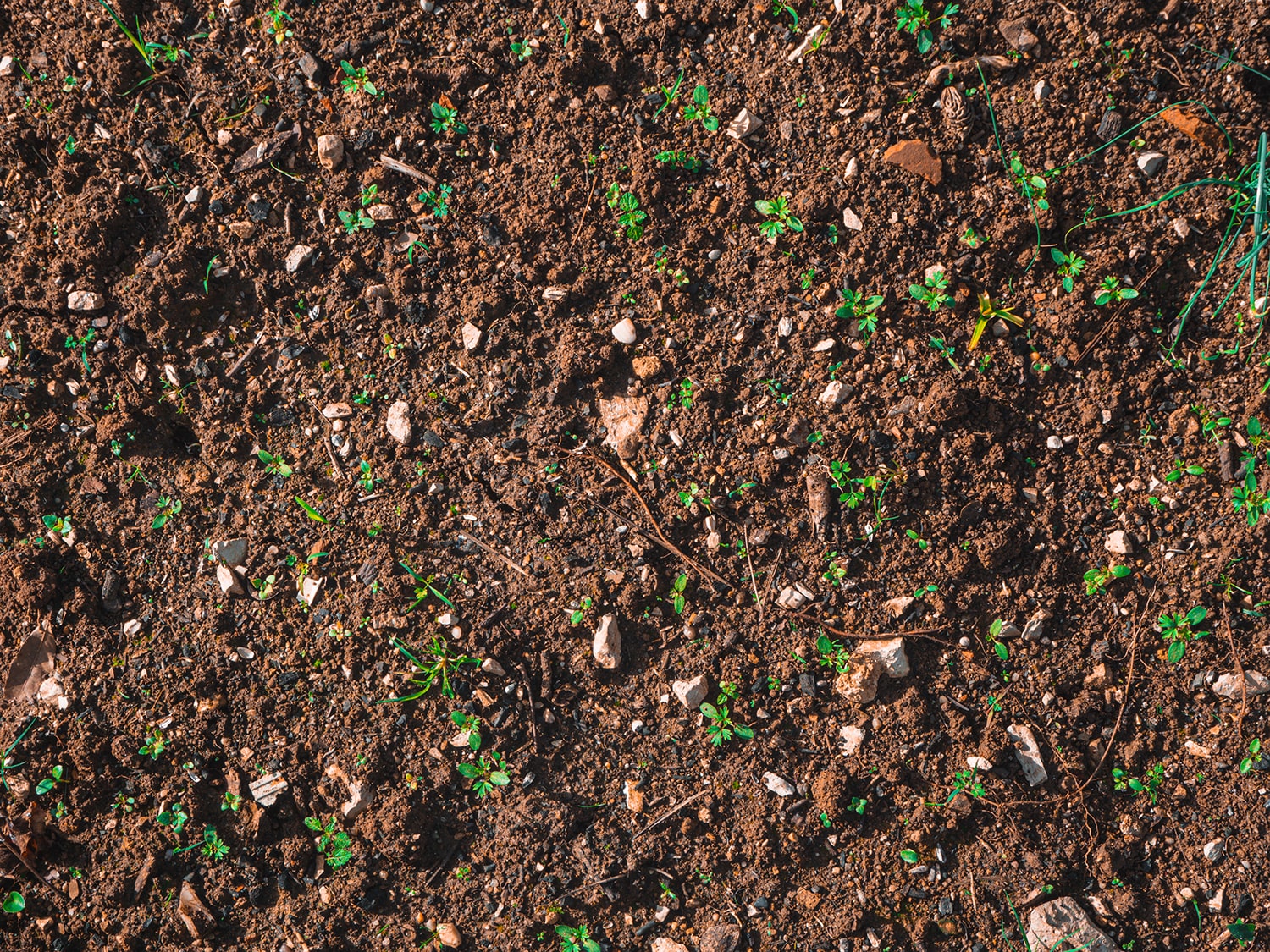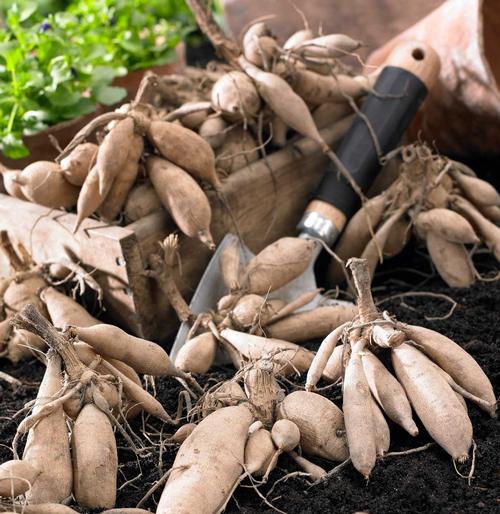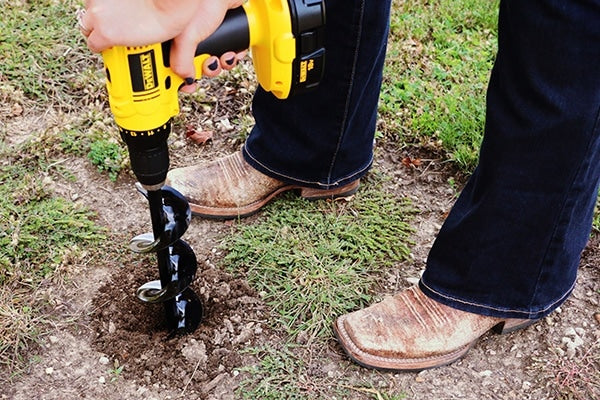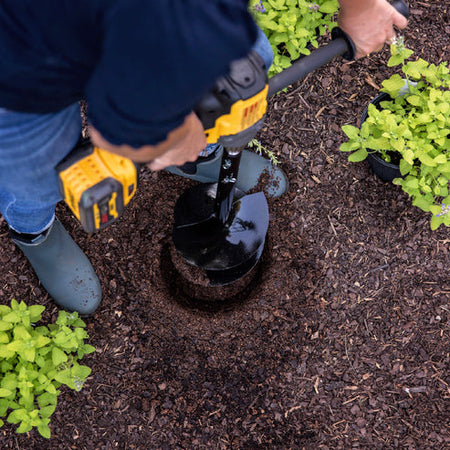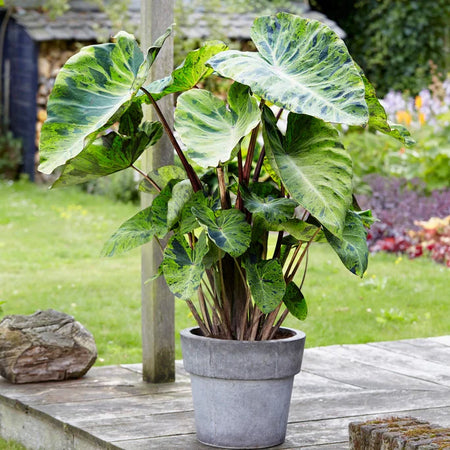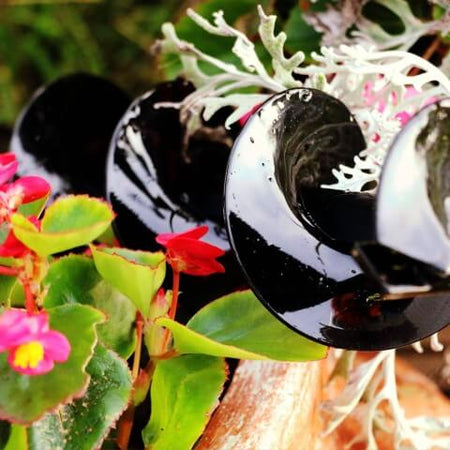With more than 42 species and thousands of cultivars, dahlias have the show stopping blooms and vibrant colors that gardeners live for. Planting dahlia bulbs, or tubers, can seem like a task reserved for an expert level green thumb, but with Power Planter augers, the process is not only easy, but efficient. With some healthy dahlia bulbs and an auger handy, gardeners of all skill levels can plant dahlias with perfect depth and spacing to create spectacular blooms.
Materials Needed for Planting Dahlia Bulbs:
Dahlia Bulbs - Look for healthy bulbs, often referred to as tubers (Fun fact: potatoes are also tubers), which are firm and free from rot or damage.
Power Planter Auger - Choose a bulb auger like our 3”x7” Bulb Planting Auger, the DIY Guru Auger (3”x12”), or save your back and plant an entire garden’s worth of bulbs with an Extended Length Bulb Auger. These augers are specifically designed to help you create uniform holes effortlessly, which is ideal for bulb planting.
Drill - Use a cordless drill and ensure it has sufficient torque that is compatible with your auger. Use this Drill Power Guide to find out if your drill is up to the task.
GroTab Fertilizer Tablets - GroTabs not only supply essential nutrients for your dahlias but also incorporate mycorrhizae, a beneficial fungus that forms a symbiotic relationship with plants. This addition enhances the root system, significantly improving nutrient uptake and reducing transplant shock. By placing these tablets in the planting holes, you can look forward to your dahlias growing stronger and healthier.
Mulch (optional)/Pine Needles or similar - Depending on your climate, mulch or a covering of pine needles can be beneficial for keeping the soil temperature stable and retaining moisture. It also helps to prevent weed growth around your dahlias.
With these materials at hand, you're ready to start planting your dahlias, ensuring they have everything they need to thrive right from the get-go. Each of these items plays a vital role in the planting process, helping not just growth but also the long-term health of your dahlias.
Choosing the Right Location
Where you plant your dahlia bulbs can directly impact their health and blooms. They require a spot that supports growth from spring to fall.
Sunlight - Dahlias need a sunny spot to flourish. They perform best in areas that receive at least 6 to 8 hours of direct sunlight daily. The proper amount of sunlight is essential for the development of strong, healthy blooms.
Drainage - Good drainage is critical for dahlia tubers to sprout and grow into big beautiful flowers. They are prone to root rot and other fungal diseases if left in soggy soil. The planting area should be well-draining. If your soil is heavy or rich in clay, consider amending it with sand or looser organic matter to improve water flow. Alternatively, planting in raised beds can be an effective solution to ensure proper drainage.
Protection from Wind - Dahlias, particularly those with taller stems or larger blooms, can be susceptible to damage from strong winds. Choose a location that is somewhat sheltered or plan to provide support with stakes as the plants grow.
Soil Quality - Fertile, loamy soil is ideal for dahlias. The soil should be rich in organic matter with a slightly acidic to neutral pH. Before planting, it can help to work compost or manure into the soil to enhance its fertility and texture.
Proximity to Other Plants - Consider how your dahlias will fit into the existing garden landscape. They should be placed where they won't be overshadowed by taller plants as they mature. You should also ensure there's enough space between them and other plants to promote good air circulation, which helps prevent disease.
Best Timing for Planting Dahlia Bulbs
Dahlia bulbs are typically planted in the spring, after the last frost when the soil has warmed sufficiently. This usually means waiting until the ground temperature reaches at least 60°F. Planting at this time helps ensure that the dahlia tubers won't be damaged by cold temperatures and will have a full growing season to develop. In cooler climates, you can start tubers indoors in pots a month before the last expected frost, then transplant them outside when the temperature is more predictable.
Soil Preparation Using a Power Planter Auger
Using a Power Planter auger can significantly ease the process of soil preparation, ensuring your dahlias are set up for success from the start.
Setting the Correct Depth and Width for Holes
Depth - Dahlia tubers should be planted about 4-6 inches deep, depending on their size. Power Planter augers are perfect for creating holes of the correct depth quickly and easily.
Width - Make sure the holes are wide enough to accommodate the dahlia bulb without crowding. A good rule of thumb is to make the hole about twice the diameter of the tuber. This allows for plenty of room for roots to grow and develop.
Using GroTab Fertilizer Tablets in the Soil for Optimal Nutrient Delivery
After using your auger to create planting holes, it's a great time to add GroTab Fertilizer tablets. Place a tablet at the bottom of each hole before inserting the tuber. This ensures that the nutrients are directly available to the roots as they begin to grow.
Cover the tablet with a thin layer of soil before placing the tuber to prevent direct contact, which could potentially burn the roots.
Dahlia Aftercare
Watering - Begin with generous watering to settle the tubers and establish a good moisture base. Afterward, maintain consistent moisture levels, taking care to avoid overwatering which can lead to root rot.
Mulch Application - In regions with fluctuating temperatures or during hot months, mulch your dahlias to help stabilize soil temperature and retain moisture, reducing the need for frequent watering.
Monitoring - Regularly check your dahlias for signs of growth and any potential issues like pests or diseases. Continue applying fertilizer according to the growth stage and plant needs to support healthy development.
Expectations for Growth
Growth Stages - Dahlias typically start showing shoots a few weeks after planting. These early stages are crucial for establishing a strong foundation for the plant's later growth and bright vivid blooms.
Blooms - From mid-summer to the first frost, dahlias display their vibrant flowers. Regular deadheading, or removal of spent blooms is key to encouraging continuous flowering throughout the season.
Seasonal Care - During periods of high heat, ensure dahlias receive adequate water. For taller dahlia varieties, staking is recommended to support their growth and prevent damage from wind or heavy rains.
Growing dahlias requires a little bit of know-how and a lot of patience, but the end result is worth it. Using Power Planter augers and GroTab fertilizer tablets can make the process easier, more enjoyable, and more successful.


